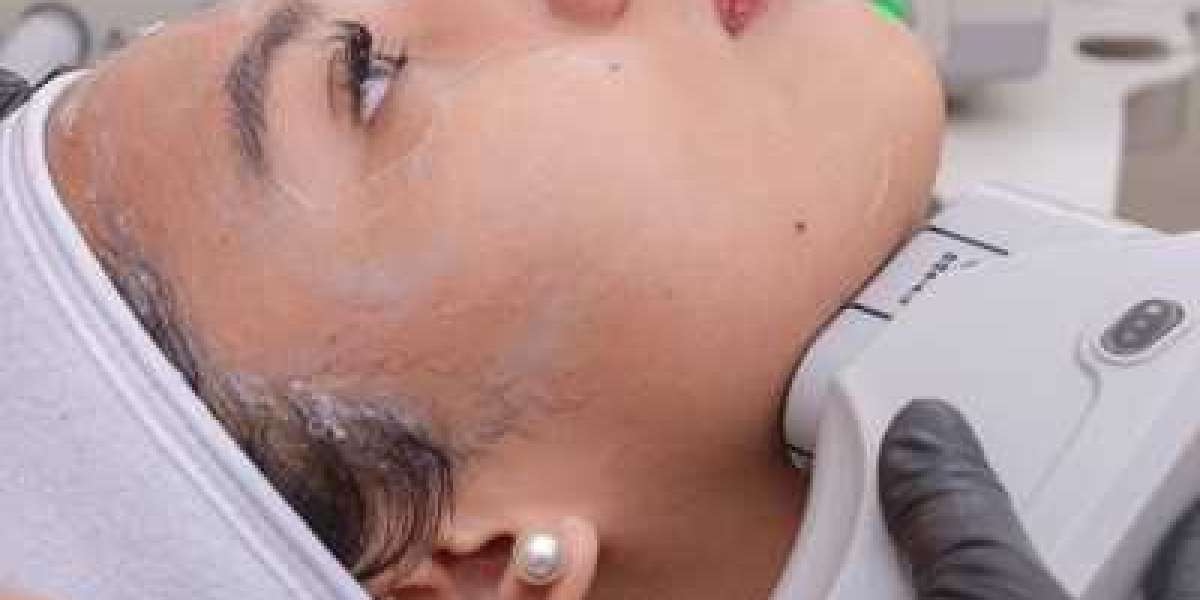High-Intensity Focused Ultrasound (HIFU) is a popular non-invasive treatment for skin tightening, facial lifting, and body contouring. It offers a non-surgical alternative to procedures like facelifts, making it an attractive option for those seeking to rejuvenate their appearance with minimal downtime. Although HIFU is generally considered safe, like any cosmetic procedure, it can have side effects. Understanding these side effects is crucial for managing expectations and ensuring proper care. In this blog, we’ll explore the potential side effects of HIFU procedure, their causes, and how to manage them effectively.
1. Temporary Redness:
One of the most common side effects of HIFU is temporary redness in the treated areas. The ultrasound energy used during the procedure heats the deeper layers of the skin to stimulate collagen production, and this can cause the surface of the skin to appear slightly flushed.
- Why It Happens: The redness is a result of increased blood circulation in response to the heat generated by the ultrasound waves.
- How Long It Lasts: Redness typically subsides within a few hours, although it may persist for up to 24 hours in some individuals.
2. Mild Swelling:
Swelling is another common side effect that patients may experience after a HIFU treatment. The swelling is generally mild and localized to the treated areas, such as the face, neck, or body, depending on the procedure.
- Why It Happens: Swelling occurs due to the body’s natural inflammatory response to the focused ultrasound energy. This reaction is part of the healing process, as the body works to repair the tissue and produce new collagen.
- How Long It Lasts: The swelling typically resolves within 24 to 48 hours but can sometimes last for a few days.
3. Tingling or Sensitivity:
Some patients report a tingling or sensitivity in the skin after HIFU. This is generally mild but can be uncomfortable, especially in areas with thinner skin, such as around the eyes or jawline.
- Why It Happens: HIFU targets the deeper layers of the skin, which can cause the nerves in the treated area to become temporarily sensitive.
- How Long It Lasts: Sensitivity usually lasts for a few hours to a few days. In rare cases, it may persist for up to a week.
4. Bruising:
Though rare, some individuals may experience mild bruising in the treated areas, especially if they have sensitive skin or are prone to bruising.
- Why It Happens: Bruising can occur if the ultrasound energy affects the blood vessels just beneath the skin. This is more likely to happen in areas with thinner skin or in people who take blood-thinning medications.
- How Long It Lasts: Bruising generally fades within a week and can be minimized by avoiding blood-thinning medications (if advised by your doctor) in the days leading up to and following the treatment.
5. Numbness:
Temporary numbness or tingling is another potential side effect of HIFU, particularly in areas like the jawline or neck. This sensation is usually mild and temporary, but it can be slightly disconcerting for those who experience it.
- Why It Happens: The focused ultrasound energy can sometimes impact nerves beneath the skin, causing a temporary loss of sensation.
- How Long It Lasts: Numbness generally resolves within a few days to a week. However, in rare cases, it may persist for a few weeks.
6. Mild Discomfort During the Procedure:
Although HIFU is a non-invasive treatment, some patients may experience mild discomfort or pain during the procedure. This is usually more common in areas with less fat or thinner skin, such as the jawline, forehead, or around the eyes.
- Why It Happens: The discomfort is caused by the heat generated by the ultrasound waves as they penetrate the deeper layers of the skin.
- How to Manage It: Many clinics offer topical numbing creams or pain-relief options to ensure that the procedure is as comfortable as possible. If you’re concerned about pain, it’s important to discuss this with your practitioner before the treatment.
7. Delayed Results:
Although not a side effect per se, it’s worth mentioning that the results of HIFU are not immediate. It takes time for the body to produce new collagen, so the full effects of the treatment typically become apparent two to three months after the procedure.
- Why It Happens: HIFU works by stimulating collagen production, which is a gradual process. While some tightening may be noticeable right after the procedure, the full results will take time to develop.
- How to Manage Expectations: Patients should be aware that HIFU is a gradual process and should not expect drastic changes right away. It’s important to have realistic expectations about the timeline for visible results.
8. Rare Complications:
While HIFU is generally considered safe, there are rare cases where complications can occur. These include burns, scarring, or prolonged numbness, particularly if the procedure is not performed by a qualified and experienced practitioner.
- How to Minimize Risk: To minimize the risk of complications, it’s crucial to choose a certified and experienced provider who uses FDA-approved HIFU devices. Following the recommended aftercare instructions also plays a role in preventing complications.
Conclusion:
HIFU is a safe and effective treatment for non-invasive skin tightening and rejuvenation, but like any cosmetic procedure, it comes with some potential side effects. Common side effects include mild redness, swelling, tingling, and sensitivity, all of which are temporary and typically resolve within a few days. More rare side effects, such as bruising or numbness, may last slightly longer. By choosing a qualified practitioner and following aftercare guidelines, you can minimize these side effects and enjoy the full benefits of HIFU with minimal discomfort.
For more information visit Enfield royal clinic in Islamabad.








